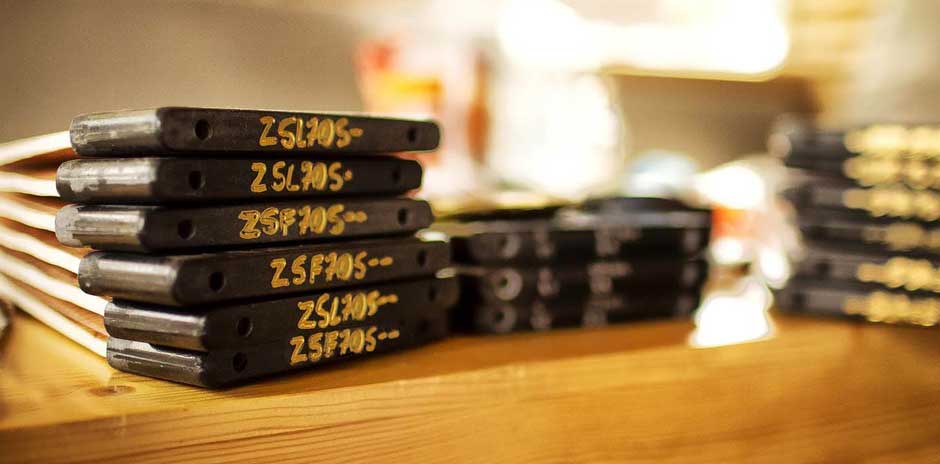
One of the single most important aspects to your FW setup is what is under your feet; fins. As a result, fins have been somewhat an aspect that people obsess about a little too much. As it stands right now, there are 4 mainstream fin makers in the World who’s fins are actively being used on the FW Pro Circuit (apologies to the smaller, lesser known fin companies who I have left out): Deboichet, Kashy, Select, Hurricane, whereby nearly 70% of those are Deboichet made. Each fin company makes a variety of foils in a number of flex stiffnesses, torsional stiffnesses, rakes and twist, which doesn’t make buying a new fin an easily made decision. Coupled with long queues on fin orders and high price tags, many people end up spending money on fins that aren’t helping them. Understanding some basic theory and terminology used in the fin-world might just help you make an informed decision before you part with your hard earned money. Understanding what the fin does to the trim of your board and what you should be looking for when you test fins against each other, might even be more useful. Here we will attempt to do both …
First and foremost, it is important to clarify a few aspects of terminology used when people talk about fins, as scouring the popular windsurfing forums over the past few years you will find a plethora of information where people are using terms incorrectly and are only adding to the confusion. Here are a few of the key terms used in fin-ology.

Rake:
Rake is simply the angle of the leading edge of the fin, relative to a line perpendicular to the bottom of the board. Everyone started thinking about modifying the rake of their fins in a more mainstream sense around the 2003 FW Worlds. As Deboichet represented about 95% of the fin market at that time, the ‘rake’ scale became popularised under a number system only applicable to Deboichet fins.
Deboichet uses a scale such as +4cm, +6cm, +8cm etc (where +11cm is vertical). Both Kashy and Hurricane use a scale such as 2 degrees, 3 degrees etc (where 0 degrees is vertical).
Deboichet: +8cm = 2.5 degrees = 30mm back from vertical.
Ps. Remember that MORE rake, means the fin is LESS upright (more swept-back at the tip). Because Deboichet’s scale is counting up as you decrease the rake, a lot of people have mistakenly written on forums about more rake when they are actually talking about moving fins from +6cm to +8cm, which is LESS rake.
Generally speaking, the more upright your fin is, the more lift it generates at the expense of induced drag. In light winds, people usually have relatively upright fins and in strong winds, some may have their fins with a little more rake to keep control of the board. Another important point to understand about rake is that by changing the rake of a fin, you are also influencing the twist.

Twist:
Twist is probably one of the least well understood characteristics of a fin. It is most commonly mistaken as being ‘torsional-stiffness’, when it is in fact, something completely different. When sailing, the righting moment of the sailor is countered by the side-force (or lateral resistance) of the board and the lift provided by the fin. Twist (or in aerodynamic terminology, “geometric twist”) is the result of the lift developed by the fin acting very close to 1/4 of the chord, back from the leading edge, while the neutral axis for bending is about 40% back from the leading edge; so there is a torsional moment when the fin bends. Simply put, as you flex a fin when you sail, this causes the fin to twist.
The geometric twist is more pronounced if you have a fin that is more swept-back (raked). So you will probably get more twist with an R13 at +4cm than you would with an identical R13 at +8cm.
Twist is important for the performance of a fin both upwind and downwind. Having no twist in a fin allows you to generate a better upwind angle but at the expense of becoming uncomfortable (or difficult) to sail downwind. This is probably because twist reduces the induced drag of a fin (or vortex drag from the tip) which is a significant portion of the total drag of a fin at the speeds a windsurfer travels. The induced drag is reduced when the angle of attack [aoa] at the tip of the fin is less than the aoa at the root of the fin (particularly for a fin with a planform of a tapered leading edge, such as an R13).
*I’ve tried to keep this article relatively simple, but if you’d like to read some more about induced drag and geometric twist, try these:
Many top sailors will talk about the performance of their fins downwind, as much as they talk about it upwind. To be fast around the course you generally want a fin that performs downwind just as well as it did upwind. If you talk to some of the Pro’s on the circuit about downwind performance in fins you might hear them say that their fin is ‘working’ for them off the wind and allowing them to ‘drive’ off the fin to go extra deep. Most likely they are referring to the twist in their fin, as the twist allows the fin to ‘depower’ to some extent and let you drive off it, deeper downwind, whereas some fins with no twist are creating too much lift downwind and force you to head upwind, giving you that ‘uncomfortable’ feeling downwind.
Similarly, it’s been said by some Pro’s that soft fins that twist are actually faster upwind in high-winds (despite what’s in your mind about stiffer fins being better in high winds). The twist in the fin can help it depower when you’ve generated too much lift in a gust and help to settle the board down. Having a board with a very wide tail (+81cm) will help with the control in high winds also.
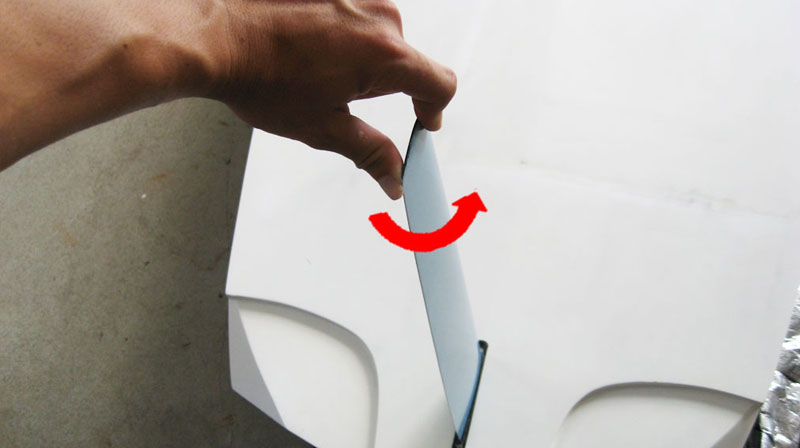
Torsional-Stiffness:
Put a fin in your board and then grip the tip of the fin with your thumb and index finger. Twist the fin tip like you are unscrewing the lid of a Coke bottle. What you are witnessing is ‘torsional stiffness’ and although it is related, it is NOT ‘twist’ in the sense of how a fin manufacturer will be measuring it.
High torsional stiffness has been recently receiving more focus with the popularity of the Kashy fins on the market. Most of the better Kashy fins I have seen are more torsionally stiff than the majority of Deboichet/Hurricane fins and I believe this helps the Kashy fins retain a constant angle of attack which helps increase lift whilst maintaining good upwind speed.
The confusing thing about twist vs torsional-stiffness is probably because some people may assume that a softer fin is always going to have less torsional-stiffness and therefore more twist, but in actual fact that is not true. Both twist and torsional-stiffness are dependent on the planform, rake and most importantly, the fibre directions when the fin is layed-up during manufacture. As a result, a fin with extremely high torsional-stiffness can be built to twist a lot, or it can be built to have no twist at all. It is not possible to check twist with your fingers using the method above; it is possible however, to gauge torsional-stiffness with your fingers using this method.
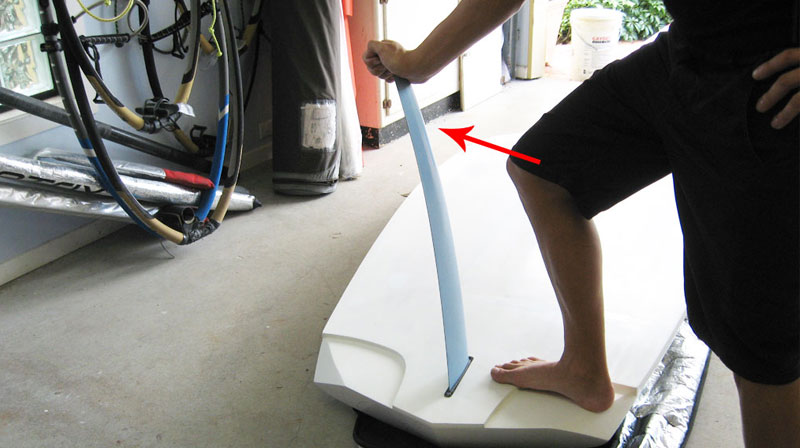
Flex-Stiffness:
This is the stiffness you generally hear referred to when you buy a fin. A soft fin, a S–, an XXS, a 651; or so the lingo goes. Choosing the right stiffness of fin for the conditions you are sailing is very important, however the choices are about as individual as they come and depends heavily on your technique, sail brand, board brand and wind/wave conditions.
In flat water (eg. a lake), you put a more constant load on your fin when sailing upwind whereas on the ocean with swell and wind blown chop on the swell, the load on the fin is spiking as you go over waves or if you get slightly airborne over a chop. The other thing to consider is rider weight and sail size. A 90kg rider holding his 11m in 25 knots is most likely putting a considerable amount more load on his fin than a 72kg rider on his 9.8m in the same wind.
Selecting A New Fin
So you are going to go and buy yourself a nice new shiny fin. First, you should ask yourself a few questions about what you want the fin for.
- Light winds? You most likely want a soft, powerful fin.
- Light winds in shifty/flukey conditions (ie, if you sail on an inland lake, with fresh water or in off-shore winds)? You most likely want a fin that points super high, even if it is slow; pointing high allows you to get into the new wind quicker.
- Medium-strong winds on the ocean? It’s possible you might want a fin that travels faster, even at the expense of a little height, to be able to dodge between swells and help with your downwind speed.
Now What? Some Ideas on Fin Tuning
Now that we’ve covered a little bit of terminology and some super basic ideas to think about when selecting a fin to buy, it’s time to move over to how to tune a fin and what to think about when you are testing fins against other fins. It is quite difficult to explain what you are looking for when you tune any aspect of your gear, let alone fins. Tuning fins is about an intuitive feeling for going fast, pointing high or going deep downwind and this key skill that the Pro’s possess is something that mere mortals find difficult to grasp. Notwithstanding what I have just said, I still believe it is important that someone at least makes an attempt to explain what this feeling is, because that knowledge is one of the most sought after pieces of information in competitive windsurfing and probably something that most Pro’s will not want to give away.
On that note… here goes…
The approach I suggest you use when testing fins involves 3 stages:
- Trying the new fin; understanding and learning its ‘effect’ on the board
- Testing the fin against the best fin you already have
- Testing against a training partner
Stage 1: The “Effect”
The first thing you should think about when you try a new fin is its “effect” on the board; paying most of your attention to the ‘trim’ of the board. Most boards, generally speaking, like to be sailed with the nose riding high (lifting a little) and railing well upwind with even pressure between the front and back legs (or a little more pressure on your back leg if necessary). Some fins do this naturally (like a standard R13), but with other fins (even some that may be faster than an R13) you may need to work hard to develop this response from the fin.
There is no substitute for time-on-water. Just go sailing and get used to the feeling off your new fin. Forget about changing settings at this stage. Just sail your new fin.
Stage 2: Test the Best
To test any fin, you should always test it against the best fin you already have. Go for a run on your current best fin and find the setup that gets the most out of that fin in the conditions you are currently sailing (boom height, mast-track position etc). Now without changing any gear settings, go for a run on the new fin and pay close attention to how this fin effects the trim of the board (does the board feel stickier? sluggish? more responsive? lifting the nose too much and losing control?). If there is a difference, the first thing to try is moving your mast-track. I always suggest moving your mast-track in larger movements; 3cm at a time can sometimes be good to get a first impression on trim. When you are more dialled in to the feeling you can start moving it 1cm at a time.
If there is no difference in how the board sails/rails upwind then try moving your mast-track around anyhow. It’s possible, this new fin, even though it hasn’t changed the trim of your board, could have more control at the top end and allow you to run the mast-track further back than your best fin, which may be a faster setting on your fw board.
Downwind, mostly you want to find a fin that helps fly-the-fin, which is, excessively railing to reduce the wetted surface-area of the board. Traditional tapered leading-edge fins with a little twist such as an R13 or Hurricane 4a will rail the board almost with no concentration necessary. Some of the newer, softer fins with more torsional-stiffness, (such as a new Select R07 or some model Kashy’s) might require a slightly more upright stance or different mast-track position to fly-the-fin more efficiently. The fins that will do this the best will depend on the board/sail combination being used.
Stage 3: Race Your Buddy
Now that you’ve tuned your gear to compliment your new fin, go and test it against your training partner to check its performance. It’s important in this stage to have a consistent training partner of a similar speed and one who appreciates the rules of ‘2-boat tuning’ and doesn’t just put you in the hopeless position all the time. You need to swap positions regularly when you run to make sure your position isn’t affecting the other sailor’s performance and it is likely, with two sailors, that one sailor might point higher and the other might go faster on their current setups. Every so often on the run upwind, change positions from windward to leeward boat, to see if you can judge whether one fin is going better than the other.
It’s important to understand how much ‘better’ one fin is going in the scope of the original points that were mentioned “when selecting a new fin”. HIGHER is different to FASTER. Imagine those strengths/weaknesses if you were in a race. It’s not much good being excited your new fin is faster upwind than your friend’s if he is going higher than you – when you purchased this fin to sail in shifty offshore conditions on a fresh-water lake. He will most likely punish you around the course and you’ll be 300 euros poorer.
Don’t forget downwind performance!
That’s It, We’re Done!
This is a pretty ‘general’ write-up about tuning fins, simply because the variables in windsurfing are too great to write a decent article on this unless you are writing about using a particular sail-brand, on a particular board, for guys at a particular body weight sailing in particular conditions. What I hoped to achieve, is to create a reference point and lay-down a few important points about creating your own system to efficiently let you test fins (with or without a training partner/gps-unit analysis) and get people thinking more about “what fins do to your board trim”, rather than obsessing over what fin is Antoine using.
If you remember the few key pointers about fin testing and learn a little about the terminology of fins, it will help you get more out of the millions of forum posts out there on fins (ie, I suggest you Google anything that Boogie has written on a forum in the last 6 years).
Hopefully this article will help with the next fin purchase. Down the track we will attempt to write something more specific to boards as with the new 2-year lock on board shapes, we are stuck with the current gear for some time now … In the meantime, here are a few frequently asked questions on fins from various windsurfing forums around the world.
Frequently Asked Questions Regarding Fins.
I’ve read some Pro’s now prefer softer fins for high-wind; I thought stiffer fins were better for high-winds?
I think you will find that statement to have been true about 3-4 seasons ago, but it doesn’t apply to the current gear. Since 2006, with the Starboard 160 (and now 161, 162). The tail-widths of the FW boards have increased dramatically; the same for nearly all board brands, not just Starboards. As a result, with even more power from the tail of the board we can run bigger and more powerful fins than ever before.
Although cutdown fins have been around a long time, they probably weren’t as mainstream back in the Starboard 147/158 days, but now look at the R19 (as a 76cm cutdown), which is the “standard” foil to come with a 161/162 board.
If you want more power in a fin, generally speaking, you make it bigger (ie, a cutdown) or you make it softer. So now we are seeing more people using soft fins in all conditions, not just lightwinds. And some (myself included to some extent), using one fin for nearly all conditions – the lightwind fin that works great in highwinds.
So with the extra control we now have with our wider tail boards and everyone using softer and softer fins, the brands have worked on the nose shapes, making them thinner and more boat-like (specifically on the 162 and Gaastra Vapor), which has allowed us to control these soft powerful fins downwind, where before it was uncomfortable with such power under your feet.
Another aspect that I suspect that plays a role is the “twist” in these fins. Hard to know exactly what happens with a fin under your feet, but I suspect the extra twist in the softer fins allows them to depower as they flex when you sail downwind and help with control, whereas a Medium fin would be trickier downwind and a Hard fin even trickier again as they can’t release the power and so end up forcing you upwind instead of allowing you the control to drive downwind.
This new fin I have is making the board sail very flat, is this slow?
Probably. Depends on your board. As mentioned above in the tuning section, you are most likely sailing with one of these newer, softer and more powerful fins (a good example is a Kashy or what Deboichet is most likely trying to replicate with an R20). These fins create a small amount of vertical lift which in a sense, lifts the tail of your board which in turn, drops the nose of your board. I’ve read on some forums that with these fins the boards need to be sailed very flat, but I think you’ll find the fin is making your board sail flat (in other words, you don’t need to work so hard to get the optimum trim out of the fin; it is doing it for you).
Now go windsurfing!







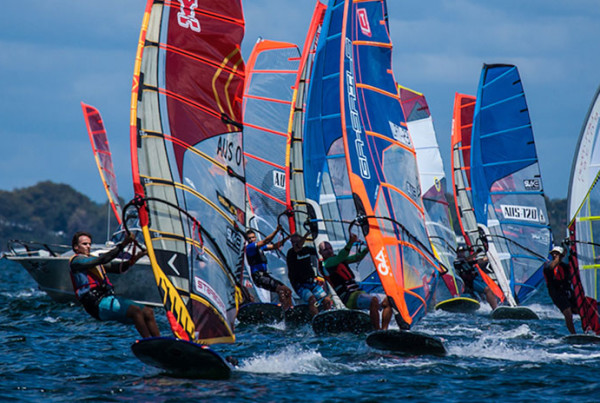
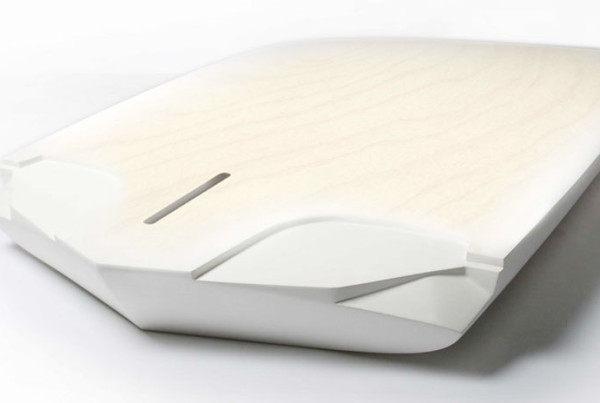
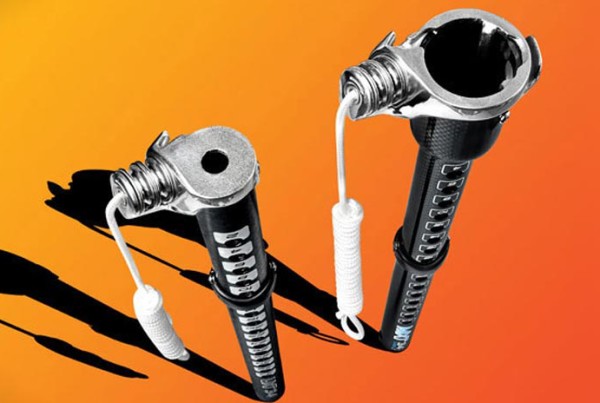
Hi Sean.
Awesome write up, very informative to us non hardcore/pro windsurfers. Keep up the good work.
This is a fantastic article. There is simply no information like this around the net at the moment. I will have to read the section on twist a few times to get my head around it!
What fins are you currently using for the Vapor board?
@ Mark H – Cheers!
Currently I’m using only 2 fins. My trusty R13 70 S (never leave home without it) and a Hurricane 4a 70 S. Both are at +8cm.
I use the Hurricane in all conditions from light to strong (there are more powerful light wind fins on the market but I prefer to use a faster fin with the 12m as there’s too much power with a big fin/sail combo). I generally only use the R13 in certain conditions, like big seas as it is slightly faster downwind in lightwinds/big seas because it seems to rail the Vapor board a little better than the Hurricane.
I’m hoping to try some new fins made in Australia in the next few weeks and like the look of the new Deb R20 so you might see me on some different fins again when I get to Europe in a few weeks…
Hmmmm, we read on the Starboard forum already that the R20’s are breaking (can’t confirm though). Have you not tried the Kashy fins? What model do you suggest? and have you tried the larger Hurricane models – FRB 5B etc ?
Cheers and great article.
Great article. Am I correct in understanding
twist is result of torsional moment v torsional stiffness ?
One thing I struggle to believe is geometric twist reduces drag. Sure doesn’t for glider wings. I know water’s a little different but…..
Answer for PaulM,
a) understanding twist:
As the point, through which the resultant lift forces act on the fin, is offset to the neutral axis for bending, there is a torsional moment associated with the bending force; this torsional force produces geometric twist.
The torsional stiffness at a cross-section along the fin is determined by the weight, fibre direction and type of carbon reinforcement used in the manufacture of the fin eg 300gm/sqm double bias carbon.
The angle of attack (aoa) at various positions along the leading edge of the fin is a function of the torsional moment and sectional torsional stiffness.
b) geometric twist reduces drag:
With a fin moving through the water, some water leaks around the fin tip from the windward side to the leeward side producing a fintip vortex.
With all other parameters remaining the same, the induced drag decreases as the angle of attack decreases.
If the lift diminishes towards the fintip with a smaller aoa associated with geometric twist, there is less pressure differential near the fintip. The result is a smaller fintip vortex and a reduction in the induced drag.
Cheers
Thanks John the explanation of resultant twist is very clear.
With regard to drag I see the idea but still have some doubt. For instance the keelboats run a lot of tank time, but I don’t think they build in twist to their foils (ASFASIK) On Hang Gliders ‘VG’ is pulled to reduce twist and improve glide, at the expense of control. Whatever I’ll settle for the fact they work very well and look forward to trying one of the new designs.
@ PaulM – Hmmmmm, I think you have to really segregate FW boards vs Keelboats/Gliders in regards to thinking about twist.
Because of the power-to-weight ratio, a FW board is chasing ‘speed’ as well as ‘lift’. With a standard R13 in 15 knots of wind a good sailor will be able to point 55 degrees upwind at a speed of 14.5 knots (VMG = 8.3 knots). If you can retain that height and travel at 15.5 knots, then that is a 5% increase in performance. This is something that I believe these newer, softer and more torsionally stiff fins (Kashy, R20 etc) are allowing sailors to do more efficiently. Nobody is pointing higher than they were 5 seasons ago, they are just travelling faster at the same upwind angles. “Speed” being the key ingredient here.
On a Yacht, you are mainly chasing ‘lift’. Hull speed is usually limited by other factors (weight, displacement etc). I’m not a yachting expert (never sailed one in my life) but as they are NON-PLANING boats I can assume that ‘pointing’ is their main focus – not speed. Various keelboats have at their disposal contraptions like canards, wing-keels etc to help but principally they are chasing point and so reducing keel drag with geometric twist is probably not on their agenda? (someone more “boat” orientated could confirm this for us?)
I don’t know a whole deal about Gliders either. Actually nothing. But I would guess they are also chasing lift at the expense of speed, just to stay in the air. I assume gliders have asymmetrical foils and trim tabs on the wings? They could even have ‘aerodynamic twist’ built into the wings.
That’s getting a little off topic of this article, but there’s a few mentions of glider wings in the article on Aerofoils and Wings which explains twist even further: http://www.auf.asn.au/groundschool/umodule4.html
Cheers.
@ JJ – I haven’t tried too many Kashy fins as we don’t see a lot of them in this part of the World. I haven’t tried any of the cutdowns but I’ve used a K66 here that was one of the sweetest high wind fins I’ve ever used and was working well even in 15 knots. The price tag is keeping them away from here mostly.
I also haven’t tried the FRB 5B Hurricane fins. For me, I think they are too big and probably not the fastest fin out there. I prefer a bigger sail and a faster fin (ie, a 12m and R13) rather than a big sail and big fin which I feel isn’t versatile/mobile enough for pumping, gybing/tacking at good speeds.
Hi Sean,
great articles. Amazing you find all the time to do this.
I’ve just got a R20 and will try it soonon my exocet WF087. I got it 2nd hand at a, the former owner had tried it once and didn’t like it. Maybe he was expecting a classic behaviour.
With what you mentioned, it is logical that you need to addapt to a fin like R20. Understanding how it works is a good step in the right direction.
Thanks and keep up the good work.
@ Koen – Thanks for stopping by!
I really have no idea where I find the time either, lol!
Actually I’d be really interested to hear some feedback on the R20 if you wouldn’t mind emailing me about it or even posting a comment here. My comments regarding the R20 have been based on the photos I’ve seen of it and the very short report I was given by Michal Polanowski (POL-16) after the FW Worlds in Brazil (see above photo at end of this article). Basically, I was told it was “very soft” and “looked like a Kashy shape” and that’s about it, but I’d love to really know what it is like.
There doesn’t appear to be too many around at the moment and absolutely none here in Australia. But you’re right, if its anything like I think it is, you will need to adapt a little and get used to this fin as I’m sure it won’t feel anything like a standard R13.
Cheers!
Hi Sean,
I have tried the R20 now a bit in different conditions, going from flat to chop and even big swell. Used it with 12,11 and even 9m Vapors on my exocet WF08 (the black one). The R20 I got is produced in april08 and has rake +6.
When you take this fin in your hand, you observe immediately the very very soft tip. But it is clear that it is only the top1/3 that is soft.
Sofar, I really like this fin. It is so easy to sail in all conditions. It is selfregulating the power and still delivering the lift needed to get a FW board going. Going downwind is really easy. It feels fast and controlable. I have not yet used it in a real up-down wind race, but I saw Marcus Bouman using one recently in marginal winds and he was realy far ahead of the rest (Dennis,Adri, …….).
I did put my mastbase a bit more rearwards (1cm).
The R20 feels like a very “universal” fin that was really easy to use.
Maybe also interesting: my weight is currently 90kg.
Hei
Could anyone tell me why my fin keeps a high noice, sort of whistling sound. The noice doesnt disturb me but I would like to know the reason. Should I sand it, is it breaking ….
I’ve never heard of formula fins whistling, this is usually a common occurence on generic slalom fins (ie, ones that come with your board).
Fin whistling usually is because of the finish on the trailing edge (TE) of the fin.
Quoting Ian Fox’s words from the Starboard forum:
“Often if the TE is finished too symetrically, the waterflow “collides” as both sides of the flow come together off the back of TE. By angling the TE slightly, you minutely shorten the flow on one side, which disrupts the harmony of the flow/s, and they actually merge more smoothly, without the whistle, which in turn often can indicate some minor loss of efficency.”
What sought of fin do you have? I would imagine its not good to have a whistling formula fin; it doesn’t sound too efficient.
There’s a few discussions about this going on on the Starboard forum with some ideas on how to cure the problem.
http://star-board.com/forum/showthread.php?t=1466&highlight=whistle
http://star-board.com/forum/showthread.php?t=4113
Hi,
great article! thanks a LOT!
filip
Hi Sean!
I see you testing formula HWR and LWR from Starboard. I am interested what fin will bee the best from deboichet.
I am 70 kilos and 167cm . I ride with severne code red 3 11m.
I hear the HWR is more stable but slower, LWR is faster but must keep board from more flying.
I racing, . I think buy lwr board, but I hawe dilema which is beter. I do not like the lwr is 168 litre. Is good for me HWR to?
For now I driwe starboard160 with R13 Medium.
Please tell me, what board is the best for me, and what fin for board.
I ride more on the lake, not to much chopy water, in wind 10-25 knots
best regards from Serbia
Hi Nemeth,
I haven’t tested the LWR (only HWR) so can’t give you any insight in to the fins etc. I think its best to decide on the Starboards based on their development models:
HWR – development of the 161
LWR – development of the 160
Both boards will be great but have different riding characteristics based on their predecessor boards having different riding characteristics.
If you are currently riding a 160, I’d suggest going with the LWR as it will have a similar style (obviously with improvements!) so you’ll already be used to it and most likely the fins you currently have will work great with the new board. Don’t read too much in to the ‘size’ of the boards … 168L is only 7L more than the 162, I think you’ll hardly even notice 7L in a formula board!
Does anybody have have any information how there fins are laid up.
What weight carbon, what direction the cloth is laid in etc.
Hi All, I finally went ahead and put together a Web site. The main reason was to publicize my up coming event, but I went ahead and added a link to my design brief.
Take a look. (And Enjoy the Ride)
Dave
Hi Dave,
Website looks great! Thanks for posting here. Feel free to post some updates here when the event goes ahead, I’m sure a lot of readers will be interested.
How would you describe the k73/70 in comparison with the R20.
I currently riding SB 162 with R20 and R19.